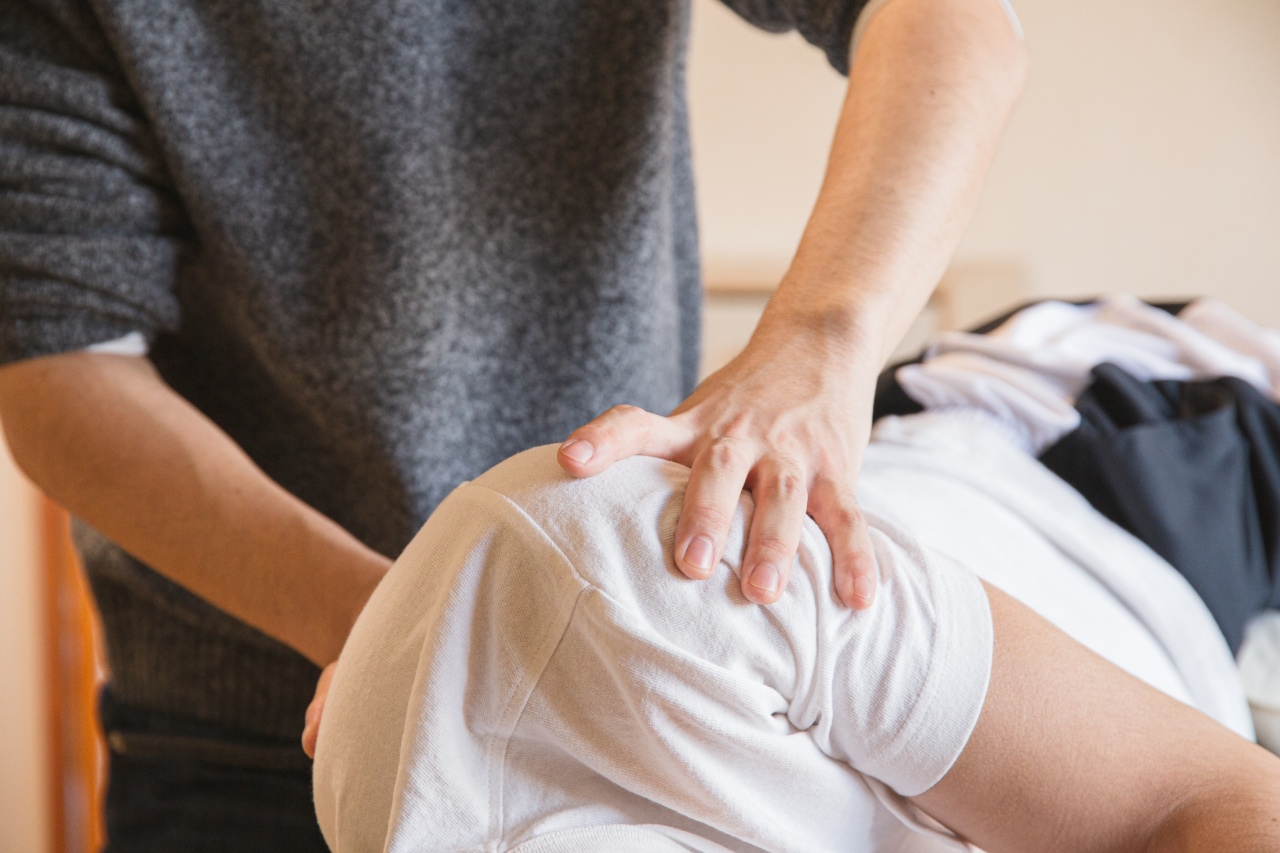If you have ever experienced a dislocated shoulder, you know how painful and debilitating it can be. A dislocated shoulder occurs when the upper arm bone pops out of the shoulder socket.
This can happen as a result of a traumatic injury, such as a fall or a collision, or due to repetitive movements, such as throwing a ball or lifting weights. Regardless of the cause, it is crucial to seek prompt medical attention and follow proper treatment protocols to ensure a full recovery.
Common Symptoms of a Dislocated Shoulder
When a shoulder dislocation occurs, there are several telltale signs and symptoms that can help identify and differentiate it from other shoulder injuries:.
- Intense shoulder pain
- Inability to move the shoulder
- Swelling and bruising around the shoulder joint
- Visible deformity or protrusion of the shoulder
- Numbness or tingling in the arm or hand
Immediate Care for a Dislocated Shoulder
If you or someone around you dislocates their shoulder, it is essential to provide immediate care before seeking medical attention:.
- Stay calm: Remaining calm can help manage the pain and prevent further injury.
- Support the arm: Gently cradle the injured arm to prevent unnecessary movements.
- Apply cold compress: Placing a cold pack or a bag of ice wrapped in a cloth on the shoulder can help reduce swelling and minimize pain.
- Do not try to self-relocate: Attempting to relocate or “pop” the shoulder back into place is not recommended. Leave this task to a medical professional.
- Seek medical attention: Contact your healthcare provider or visit the nearest emergency room for proper diagnosis and treatment.
Diagnosis of a Dislocated Shoulder
To diagnose a dislocated shoulder, a healthcare professional will perform a thorough examination. This may include:.
- A detailed history of the injury and symptoms
- Physical examination of the shoulder
- X-rays to assess the extent of the injury and determine if there are any associated fractures
- Occasionally, advanced imaging techniques like MRI or CT scans may be used to assess soft tissue damage
Non-Surgical Treatment Options
In some cases, a dislocated shoulder can be managed without surgical intervention. Non-surgical treatment options may include:.
- Closed reduction: A healthcare professional will administer a sedative or local anesthetic and gently manipulate the shoulder to guide the humeral head back into the socket.
- Immobilization: After the shoulder is reduced, a sling or a shoulder immobilizer may be used to keep the arm and shoulder stable and allow for healing.
- Physical therapy: Once the initial pain and swelling subside, physical therapy exercises can be initiated to regain range of motion, strengthen the muscles around the shoulder joint, and prevent recurrent dislocations.
- Pain management: Over-the-counter pain relievers or prescribed medications may be recommended to alleviate pain and inflammation.
Surgical Intervention for a Dislocated Shoulder
In severe cases of shoulder dislocation or cases with recurrent dislocations, surgical intervention may be necessary. Some common surgical techniques for treating a dislocated shoulder include:.
- Arthroscopic stabilization: This minimally invasive procedure involves inserting a small camera and specialized instruments through tiny incisions to repair and tighten the torn or stretched ligaments of the shoulder joint.
- Open surgery: In complex cases, open surgery may be required to repair damaged ligaments or structures within the shoulder joint.
Recovery and Rehabilitation
The recovery and rehabilitation period following a dislocated shoulder largely depend on the severity of the injury, the treatment received, and individual factors. In general, the following steps can aid in a successful recovery:.
- Follow the prescribed treatment plan: Adhere to the instructions provided by your healthcare provider, including taking medication as directed, attending physical therapy sessions, and following any restrictions on movement or activities.
- Rest and protect the shoulder: Avoid any activities that may put excessive stress on the healing shoulder joint. Wear any recommended immobilization devices, such as slings or braces, as instructed.
- Gradual range-of-motion exercises: As the shoulder heals, your healthcare provider or physical therapist will guide you through gentle exercises to restore shoulder mobility gradually.
- Progressive strengthening exercises: Once sufficient range of motion is achieved, specific exercises will be prescribed to strengthen the muscles around the shoulder joint and enhance stability.
- Return to normal activities: Gradually reintegrate activities that involve the shoulder, such as sports or physical work, under the guidance of your healthcare provider or therapist.
Preventing Shoulder Dislocations
While some shoulder dislocations may occur due to unexpected accidents, there are preventive measures you can take to reduce the risk of dislocating your shoulder:.




























